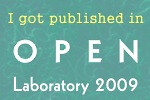
Misreading on the tube leads to WAR
“The Ruffian” is great title for Ian Leslie’s Substack given his predilection for roughing up lazy thinking. I first came across him as the author of “Conflicted”, an excellent book about how to disagree constructively, a practice he frequently deploys in his Ruffian pieces. I sometimes disagree with Leslie, but not often enough to stop me paying the £4 monthly subscription to his Substack. He’s a sharp-eyed and sharp-tongued observer of contemporary life and there’s a substance to his writing that can’t easily be dismissed.
A couple of weeks back Leslie’s sharp eye was directed towards the critical reception of the recent Netflix specials from Ricky Gervais and Dave Chapelle, both of which have been branded as “anti-woke” by commentators who dismissed the performers as lazy and out of touch. In characteristic hang-on-a-minute mode, Leslie observes that both shows are among the most popular currently on the streaming service and mounts a pretty cogent defence that in his show Armageddon, Gervais (whose work he is most familiar with) is laughing not at minorities but at the po-faced strictures of the members of the ‘wokerati’ who have set themselves up as censors.
I think he has a point, even if the piece did raise a couple of uneasy thoughts that I wanted to chase down. I agree with him that comedy doesn’t have to have a moral purpose – it’s about the laughs. And like him, I want to live in a society where comedians are free to push at boundaries and to play with the hypocrisies and discomfort of their audiences. Indeed, I think that comedians have a licence to transgress. Those watching have made a choice to do so and there’s an understanding that what’s being watched is a performance, even if some performers work hard to disguise their artistry.
Even so is there any collateral damage? The comedian’s licence to transgress isn’t easily transferred to the workplace or other social environments. Gervais can’t reasonably be held responsible for the retelling of his material, but it is nevertheless absorbed into broader discourse.
As others have said elsewhere, Gervais’s show is a bit lazy in its content and construction. He’s done smarter work and I’ve seen edgier and better crafted shows challenging social mores from the likes of Stewart Lee, James Acaster, and Hannah Gadsby. Armageddon lacks their fire and sophistication, though admittedly Lee, Acaster and Gadsby were approaching transgressive boundaries from different angles in their work (I am probably revealing my tastes and biases here). Gervais leans too heavily on simplistic caricatures of some of his targets such as critical race theory or statue protests (though he had a good joke about cultural appropriation). These things are fair game for comedic attack but do jokes that operate at a Daily Mail level of critique of the underlying ideas erode the foundations of efforts to create a fairer and more tolerant society (efforts with which Gervais admits at the end of the show he supports)?
On balance, I suspect not. I felt I could take what I liked from Ricky Gervais’s show and discard the rest and my guess is that many other audience members are probably doing the same. Is it a problem that not all are – that some are clapping and nodding along without seeing the artifice in Gervais’s act? I find it hard to believe that the political divisions over the merits and demerits of ‘wokeness’ depend much on any one comedian, however popular.
I’m very likely over-thinking this, but I still think there’s a broader point here about the impact of misunderstanding in public discourse. Misunderstanding is the raw material of comedy, which is part of the justification for its license to transgress. Jokes often play on people’s misperception of the set up: “By my age, my parents had a house and a family, and to be fair to me, so do I, but it is the same house and it is the same family” – you can see why Hannah Fairweather’s was judged one of the funniest jokes at the 2022 Edinburgh Fringe Festival. However, in discussions that aim to critique one viewpoint or another, misunderstanding is more problematic, whether it’s intentional or not.
The intentional part is obvious in the rhetoric of political posturing. But there’s another aspect of the problem that seems to be more common in the age of quickfire social media and was highlighted in Helen Lewis’s Substack on the reaction to the Gervais and Chapelle shows on Netflix: the politicisation of arts criticism. Lewis writes “Many people are making political judgements, rather than artistic ones, and using these cultural avatars to signal their political beliefs,” and suggests this is happening both because “it’s easier to write about the ideological content of an artwork […] than it is to appraise its technical details” and because controversies over ideology, particularly ones stoked by half-truths and superficial analyses, attract readers and clicks. The problem extends to those of us who engage in social or political debates on Twitter/X, Instagram, and in blogs or Substacks, where the primary purpose is to attack or defend a given position, because we are on show in a technologically enlarged public square. It’s human nature to fall back on snap judgements and assume that any given statement defines a person or the full contours of their political viewpoint. We’re all prone to this sort of kneejerk or system 1 thinking, which is most likely to be unleashed in the heat of partisan politics or – to return to my starting point – the woke and anti-woke enmities that inflame the current culture wars.
The temptation to react without thinking more deeply might be augmented by the rapid-fire format of much of social media but is not confined to it. Even in longer form writing it can be difficult to convey the totality – dare I say complexity? – of what we want to say. Even as I write this post, already festooned with mid-branching qualifications, I aware of the compromises between the clarity and conciseness. Ideas spill and meander in branching lines of thought and can be hard to shape into concrete forms. This is why Pinker argues it’s so much easier to explain yourself in conversation than in writing, where you cannot react to your audience and have instead to anticipate their needs.
I write all this as someone who has given in to the laziness of system 1 thinking on occasion (mostly on Twitter) and who has in turn, as a result of working in matters of EDI and research culture in a university setting over the past several years, found myself misunderstood. I have been variously accused in the press and on social media of being a stifler of academic freedom, a remover of statues and, on one particularly memorable occasion, “a witchfinder general”. As far as I am concerned, each of these accusations was based on misunderstanding or misreporting, but maybe part of the fault was mine for not expressing myself clearly enough. While each accusation was an irritant, I mostly opted not to respond. This was because although I was being criticised personally, as a member of the senior leadership team of the university, I risked any reaction being seen – misunderstood? – as an institutional pronouncement. I no longer hold that position, so it is now easier for me to write about these incidents, but I don’t feel completely free of the constraint of institutional association.
Still, the lack of response still feels like a failure. I am well aware that contested matters of EDI present no easy solutions, which is why I made openness to challenge and dialogue the seventh of seven pillars in our university EDI strategy and have striven to live up to that commitment in responding to concerns raised by colleagues and students. But it’s hard to know how much faith people have in that commitment (both internally and externally) and it certainly remains the case that universities struggle to engage meaningfully in public-facing discussions about what they are doing.
The facile answer to this challenge is that everyone should read and absorb the lessons of Ian Leslie’s book about how to have a productive argument. That’s easier said than done, alas, even at universities which, of all our public institutions, are supposed to be the places where ideas can be tested rigorously – to destruction if need be. The places where thinking should be the least lazy.
However, it doesn’t always work like that. As we have seen last week with the Employment Tribunal judgement that Professor Jo Phoenix was subjected to victimisation and harassment at the Open University for her gender critical beliefs. The lesson to draw here is not that such behaviours are to be found at all UK universities. In my experience of leading on EDI at my own institution and through talking to my opposite numbers across universities in the UK and Europe, there is serious engagement with the myriad intersecting issues (including academic freedom and freedom of speech) that affect efforts to create environments that more equal, more diverse and more inclusive. Although some might accuse universities of mindlessly quaffing the Kool-Aid of wokeism and identity politics, what I have mostly seen is recognition that we are grappling with complex and shifting debates and that dialogue to find a way forward has to embrace the full range of views that are advanced in good faith.
Perhaps these internal discussions are too internal. It remains true that creating a space within universities for critique of difficult issues – the appropriate balance between trans rights and women’s rights, the Israel-Gaza conflict, the frictions between sexuality and some religious beliefs – remains, well, difficult. There is nervousness about internal and external reactions that crowd out efforts to have a more informed and nuanced discussion between different perspectives. But if universities aren’t prepared to shoulder that risk, who will? They are not helped by the fact that these issues are now grouped under the simplistic and misleading term, ‘culture war’. Different perspectives on our aspirations as a society or a culture aren’t going away, so why condemn ourselves to endless bitter conflict? As a first step, wouldn’t it be better to stop warring and have a conversation? Who’s brave enough to go first?



































